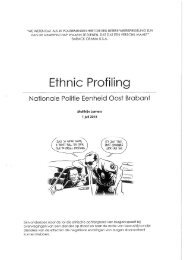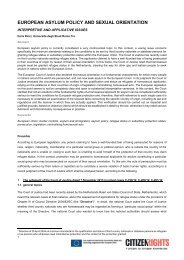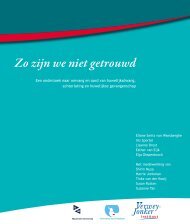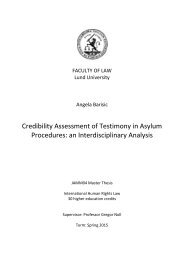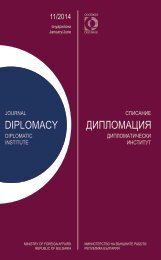AEMI
AEMI-2016-web
AEMI-2016-web
Create successful ePaper yourself
Turn your PDF publications into a flip-book with our unique Google optimized e-Paper software.
128 <strong>AEMI</strong> JOURNAL 2015<br />
Conservation of these historic assets is a<br />
critical step in the development process<br />
aiming at improving the aesthetic and<br />
recreational qualities of the country as<br />
well as enhancement of the local identity<br />
and character of a city or town in<br />
former colonial holdings and in Dutch<br />
diaspora countries. 66<br />
Conclusion<br />
This chapter has demonstrated the role<br />
European expansion during the age of<br />
discovery played in interconnecting the<br />
earth’s peoples, cultures, economies, and<br />
polities, how our world become ‘global’<br />
and the vital role states and nations from<br />
Antiquity, the Ottoman Empire, the<br />
Middle East and Indian Ocean Rim and<br />
Americas played in this history. It described<br />
the main historical events from<br />
the 1500 until the 1940s that stimulated<br />
the movements of people at various times<br />
into either colonial outposts or migration<br />
countries in the IOR and Americas<br />
and the monies, goods and services that<br />
were traded, produced or plundered that<br />
supported Europe’s economic and socio-cultural<br />
development. It also noted<br />
the increased mobility of peoples during<br />
colonialism and the extent to which their<br />
remittances back home continued after<br />
the age of exploration to ensure Europe’s<br />
continued growth into modern times<br />
highlighting the extent to which the 21<br />
May 2014, Council of the European Union’s<br />
adopted ‘Conclusions on cultural<br />
heritage as a strategic resource for a sustainable<br />
Europe’ is linked to, has at times<br />
even relied on the trade and cultural heritage<br />
of states and nations in the IOR and<br />
Americas which it doing so has created a<br />
plethora of ‘mutual cultural heritage’.<br />
I noted in addition the reverse flow of<br />
current remittances out of Europe from<br />
migrants working at jobs in first world<br />
countries to family in the developing<br />
world that rivals, sometimes even exceeding<br />
foreign aid highlighting again the<br />
import role of human diasporas in sustaining<br />
and developing homeland economies.<br />
References and Notes<br />
1 I was born in Europe (Netherlands), grew up in<br />
Australia and was married to a UK migrant from<br />
Wales (deceased 2009).<br />
2 http://www.oxforddictionaries.com/definition/<br />
english/imperialism: The Oxford Dictionary defines<br />
as ‘a policy of extending a country’s power<br />
and influence through colonization, use of military<br />
force, or other means’.<br />
3 http://www.britishmuseum.org/about_us/news_<br />
and_press/press_releases/2013/a_year_of_success.<br />
aspx:The BM also attracts 27 million virtual visitors<br />
per annum; One in four overseas visitors to<br />
London and one in ten overseas visitors to the UK<br />
now visit the British Museum as part of their trip.<br />
4 http://www.silkroutes.net/SilkSpiceIncense-<br />
Routes.htm<br />
5 As the Silk Road was not a single thoroughfare<br />
from east to west, the term ‘Silk Routes’ has become<br />
increasingly favored by historians, though<br />
‘Silk Road’ is the more common and recognized<br />
name. Both terms for this network of roads were<br />
coined by the German geographer and traveler,<br />
Ferdinand von Richthofen, in 1877 CE, who designated<br />
them ‘Seidenstrasse’ (silk road) or ‘Seidenstrassen’<br />
(silk routes).<br />
6 To illustrate, the reluctance of ships to travel the<br />
entire length of a long trading route made them<br />
more willing to sell to an entrepôt port instead.<br />
The entrepôt port then sells the goods at a higher<br />
price to ships travelling the other segment of the<br />
route. In modern times customs areas have largely<br />
made such entrepôts obsolete.<br />
7 Important trade routes, known collectively as the<br />
“Incense Route” were mostly controlled by the<br />
Arabs, who brought frankincense and myrrh by<br />
camel caravan from South Arabia. The network<br />
of routes also served as a channel for trading of<br />
Indian, Arabian, African and East Asian goods.<br />
The incense trade flourished from South Arabia to<br />
the Mediterranean between roughly the 3rd century<br />
BCE to the 2nd century CE. This trade was<br />
crucial to the economy of Yemen. Frankincense




